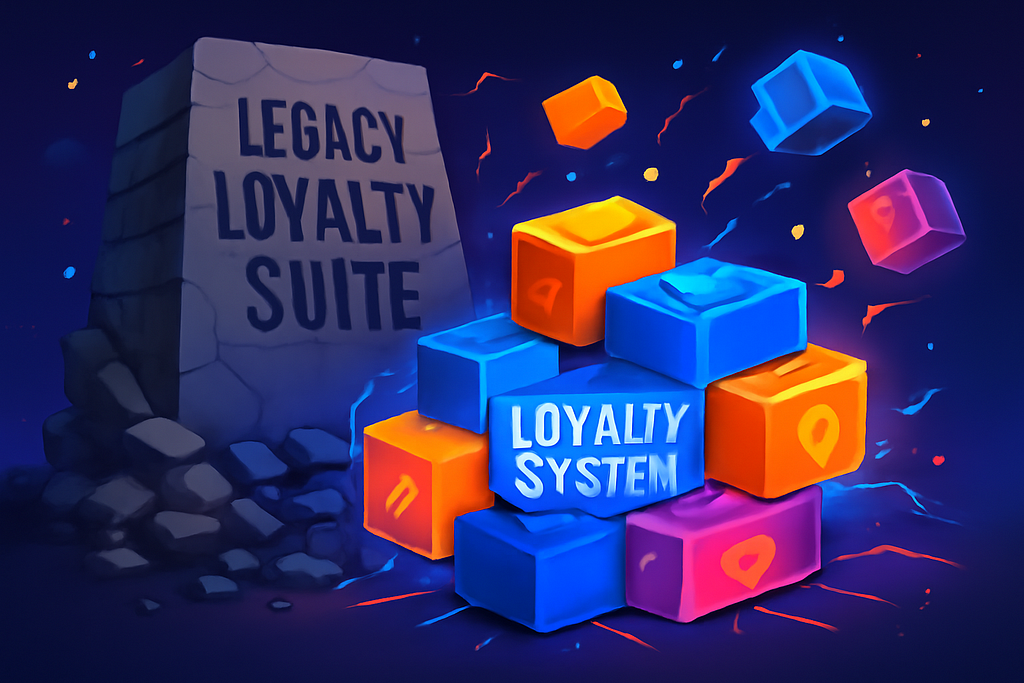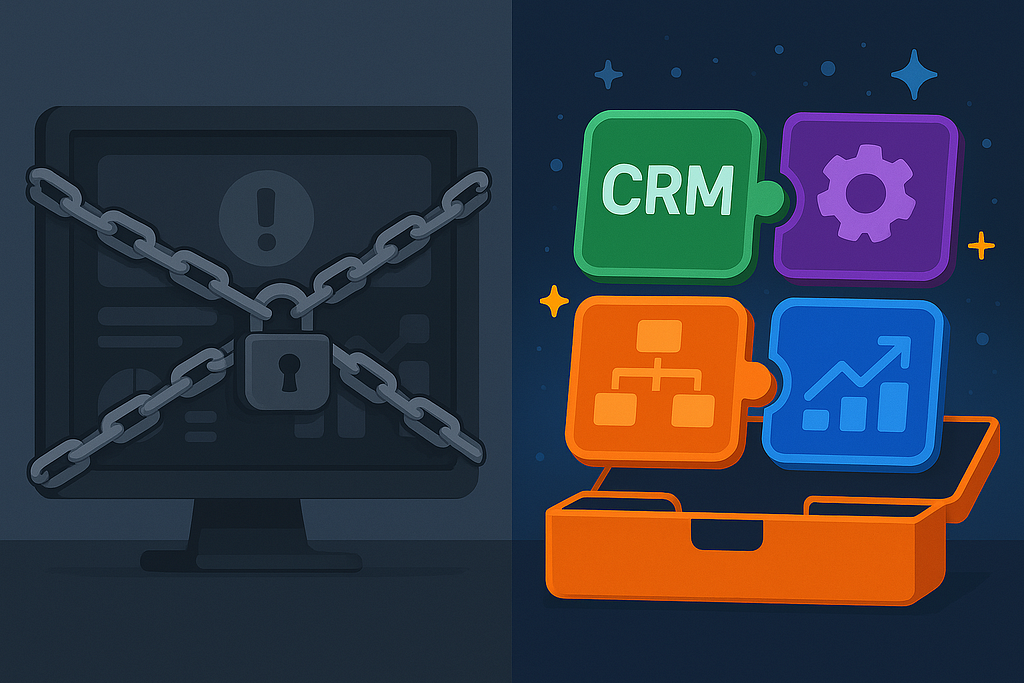By Shivank Sharma published on June 18, 2025
Legacy loyalty platforms promised scale. Composable loyalty delivers agility.

The Loyalty Suite Is Cracking
For years, loyalty was boxed in — a department, a dashboard, a monolith.
You had two choices:
But what started as convenience turned into constraint.
Rigid rule engines. Limited UX control. Sky-high costs.
And worst of all? You couldn’t move fast — because the suite couldn’t.

Now, that model is crumbling — and for good reason.
The New Stack: Composable, Modular, Interoperable
Today’s best brands don’t buy loyalty platforms.
They build loyalty systems — using modular tools and lightweight primitives that let them evolve fast.
This is what composable loyalty looks like in practice:
It’s not “plug-and-play” — it’s plug-and-design.
Composable stacks let you test, launch, and evolve without waiting on a vendor roadmap or bloated RFP cycle.
Why It Works: 5 Strategic Advantages
This Isn’t Just Tech. It’s Philosophy.
Composable loyalty reflects a deeper mindset shift:
Old world: loyalty = infrastructure
New world: loyalty = interface
You’re not just rewarding behavior.
You’re building behavioral design interfaces — that adjust based on vibe, intent, and participation.
This is why composability matters.
Because when your brand becomes a system — not a silo — you become programmable by your users.
Proof in the Market
The winners are not those who buy the biggest platform.
It’s those who assemble the most adaptive system.
Final Word
You don’t need another loyalty suite.
You need a loyalty protocol — made of interoperable blocks that flex with your brand, your culture, and your community.
Because loyalty is no longer a backend system.
It’s a user interface.
Sources
© 2025 Quboid. All rights reserved.